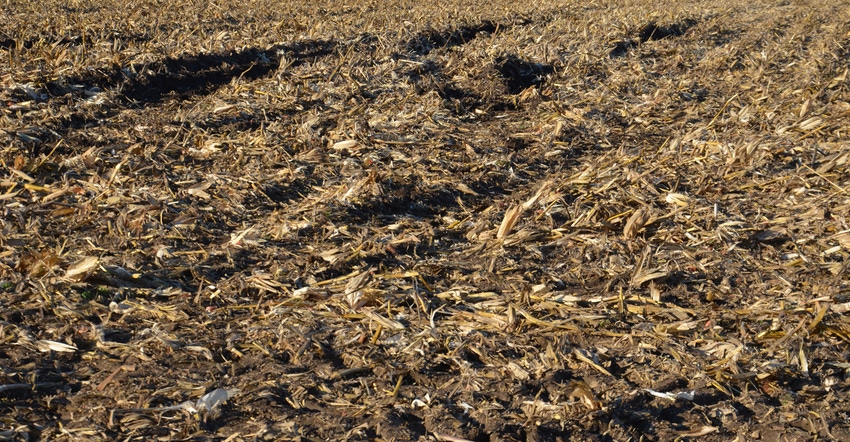December 27, 2021

Harvest proved to be a challenge in 2021. Much of Indiana experienced a wet, overcast, cool October, making harvest difficult. As November rolled around, with most farmers wanting to be done by Thanksgiving, combines started rolling every day they could. On some of those days, soil conditions were a bit wet. Some areas were rutted, and the harvest operation created soil compaction. So, now that harvest is completed, how do you plan to repair the damage?
Historically, the first thought was to hook up the big steel, take the ripper out and deep-rip those damaged areas. From a soil physics standpoint, there might be some benefit to running a ripper to fix soil compaction, but there are a couple of big “ifs.” If soil moisture conditions are average to below average, you might break up some compaction layers, but if soil moisture conditions stay moist, a ripper probably won’t lift and break up soil compaction.
Deep soil compaction
In most springs, soil conditions are too wet to effectively run a deep ripper. If they are, the second “if” arises: Can you get several inches below the actual compaction layer? Many times, the soil compaction layer is deeper than the ripper can run, and you run on top of it, providing very little actual benefit. What is the solution?
Soil compaction usually isn’t corrected quickly with one easy solution. Many times, a wet harvest can lead to multiple years of correction to completely absolve the soil compaction layer. Even if you rely on a ripper, you probably will have to wait until after the next harvest cycle and then hope you have the needed soil conditions.
Roots as an option
What if you try roots instead of steel?
Using a deep-rooted cover crop, either seeded after harvest or interseeded into a standing crop, can begin the process of breaking down soil compaction layers while also providing all those other benefits cover crops bring to the table. Radishes and rapeseed can break up medium to deep soil compaction layers, while annual ryegrass and cereal rye that grow all winter can break through deeper soil compaction zones with roots reaching over 30 inches.
Once roots die and decay, they leave channels for your corn roots to follow the next season. Cover crop roots can punch through soil compaction layers in the winter, when there is more moisture and the layers are softer.
So, what should you do with those fields that will need some attention due to harvest operations in less-than-ideal conditions? Likely it will require multiple years of treatment if the compaction and rutting are severe. A ripper is only effective if the soil moisture conditions are dry, and you can get the ripper deeper than the compaction layer.
Cover crop roots can be very effective in breaking up compaction, plus you get all those other benefits that come along for the ride. Since you will have to wait a few months to work on those compacted areas, anyway, consider using roots instead of steel next fall after harvest.
For more information in bringing cover crops into your operation, contact your local Natural Resources Conservation Service or soil and water conservation district office.
Donovan is a district soil conservationist with NRCS. He writes on behalf of the Indiana Conservation Partnership.
About the Author(s)
You May Also Like






